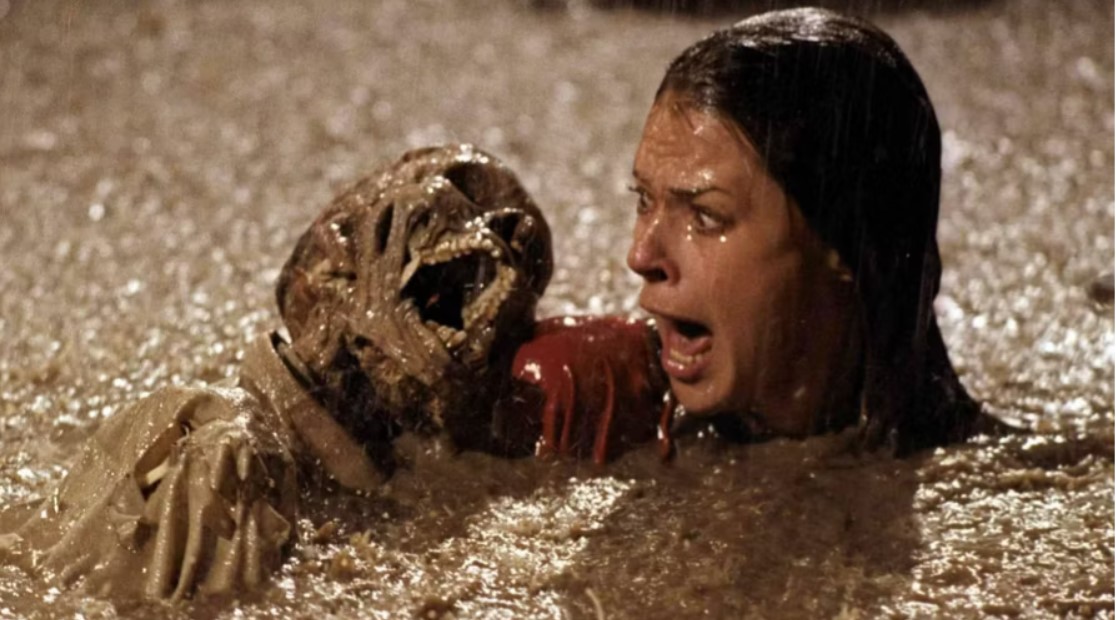In the world of horror cinema, few films have left as much of an enduring legacy as the 1982 movie “Poltergeist.” Directed by Tobe Hooper and produced by Steven Spielberg, this iconic horror film is celebrated for its terrifying storyline and groundbreaking special effects. However, what many viewers might not know is the unsettling fact that real human skeletons were used during the production of the film. In this article, we will explore the use of real skeletons in “Poltergeist,” the controversy surrounding it, and its impact on the film and the horror genre.
The Making of the 1982 Movie “Poltergeist”
Before delving into the use of real skeletons, it’s essential to understand the context of the film’s production. “Poltergeist” is a supernatural horror film that revolves around the Freelings, a suburban family whose home is haunted by malevolent spirits. The film was known for its groundbreaking visual effects, and it played a significant role in shaping the horror genre.
The Use of Real Skeletons
One of the most shocking revelations about the film’s production is that real human skeletons were used in several scenes. The most notable instance is the memorable pool scene, where skeletons emerge from the ground. These skeletons were actual human remains sourced from a medical supply company. The decision to use real skeletons was made for realism, as artificial skeletons were deemed not convincing enough for the desired effect.
Controversy Surrounding the Use of Real Skeletons
The use of real skeletons in “Poltergeist” stirred significant controversy. Many cast and crew members were unaware of the fact that the skeletons were genuine, and this revelation shocked them when they learned the truth. It was a closely guarded secret on set, with the real skeletons only revealed to the actors during filming to capture their authentic reactions.
Ethical Concerns
The ethical concerns surrounding the use of real skeletons in the film were valid. Many argued that it was disrespectful to use human remains for entertainment purposes. The decision to do so without the knowledge of everyone involved further fueled the ethical debate. This controversy remains an unsettling aspect of the film’s history.
Production Challenges
Using real skeletons presented practical challenges. Human bones are fragile and require careful handling. The crew had to take precautions to ensure that the skeletons were used safely during filming. Despite the challenges, the decision to use real skeletons contributed to the film’s eerie and unsettling atmosphere.
The Legacy of “Poltergeist”
“Poltergeist” is a film that continues to captivate and terrify audiences to this day. Its groundbreaking special effects and intense storyline have cemented its place in the annals of horror cinema. The use of real skeletons, while controversial, is undeniably a part of the film’s legacy.
Impact on the Horror Genre
The use of real skeletons in “Poltergeist” also had a lasting impact on the horror genre. It pushed boundaries and inspired other filmmakers to explore new and innovative ways to terrify their audiences. The film’s willingness to cross ethical lines for the sake of art sparked conversations about the limits of cinematic expression.
The Cast and Crew’s Perspective
In the years following the release of “Poltergeist,” many cast and crew members have shared their perspective on the use of real skeletons. Some expressed discomfort and shock upon learning the truth, while others defended the decision as a means to create a genuinely horrifying cinematic experience.
Conclusion
In conclusion, the 1982 movie “Poltergeist” remains a pivotal piece of horror cinema history. While its use of real skeletons is deeply unsettling and controversial, it contributed to the film’s lasting impact on the horror genre. It serves as a reminder that the boundaries of art and ethics are sometimes blurred in the pursuit of creating unforgettable cinematic experiences.
FAQs
1. Were the cast and crew aware that real skeletons were used in “Poltergeist”?
Many cast and crew members were unaware of the use of real skeletons during the production of the film. The revelation shocked them when they learned the truth.
2. Why were real skeletons used in “Poltergeist”?
Real skeletons were used for the sake of realism and creating a genuinely terrifying atmosphere in certain scenes.
3. What impact did the use of real skeletons have on the horror genre?
The use of real skeletons in “Poltergeist” pushed boundaries and inspired other filmmakers to explore new and innovative ways to terrify their audiences, sparking discussions about the limits of cinematic expression.
4. Were there any ethical concerns raised about using real skeletons in the film?
Yes, there were significant ethical concerns regarding the use of real human remains for entertainment purposes, especially given that many cast and crew members were not informed about it.
5. How has “Poltergeist” influenced modern horror films?
“Poltergeist” has left a lasting impact on the horror genre, influencing modern filmmakers to push the boundaries of horror storytelling and visual effects.





